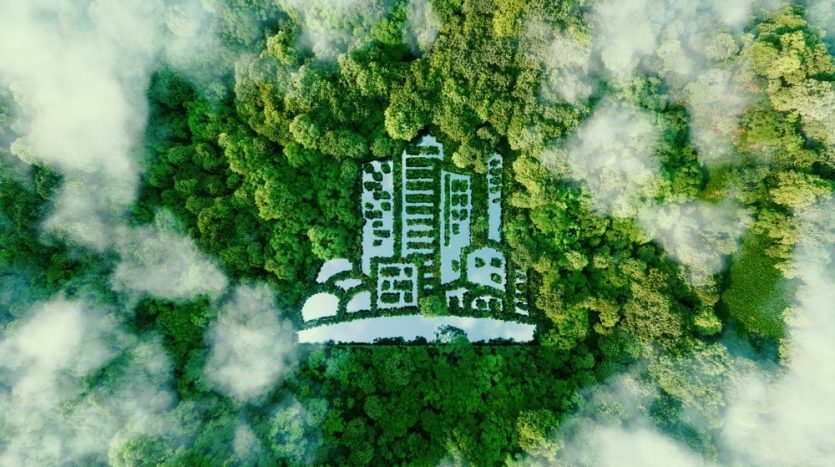Sustainable Energy Technology | Environmental Sustainability and Community Efficiency in Construction and Engineering
Sustainable Energy Technology | Environmental Sustainability and Community Efficiency in Construction and Engineering
Sustainable energy technology aims to generate and consume energy in ways that achieve a balance between environmental sustainability and societal needs. This technology encompasses a wide range of solutions that reduce environmental impact and utilize renewable energy sources. Here are some sustainable energy technologies:
Solar Energy:
– Converts sunlight into electrical energy using solar cells. Solar panels can be installed on surfaces to generate photovoltaic energy.
Wind Energy:
– Converts wind movement into mechanical energy used for electricity generation. Wind turbines and wind power stations are examples of this technology.
Hydropower:
– Harnesses the power of water to generate electricity. Energy from water currents or dams can be converted into electrical energy.
Geothermal Energy:
– Uses the Earth’s heat to generate electricity or heat buildings. Techniques include utilizing steam from hot water in the ground.
Marine Energy:
– Utilizes the kinetic power of tides or temperature differences in water to generate electricity.
Marine Biomass Energy:
– Involves converting organic materials into energy, either by turning waste into biogas or producing biofuels.
Electrochemical Storage Technology:
– Encompasses energy storage techniques using rechargeable batteries and electrochemical storage.
Energy Consumption Efficiency Improvement:
– Includes technologies to improve energy efficiency in buildings and industries, such as LED lighting systems and smart air conditioning devices.
LED Lighting:
– Using LED lights is considered a sustainable option for building lighting. They consume less electricity compared to traditional bulbs and have a longer lifespan.
Efficient Heating and Cooling Systems:
– Using high-efficiency heating and cooling systems, such as low-energy consumption air conditioning devices and underfloor heating systems.
Loss Management Techniques:
– Using Energy Management Systems to monitor and analyze real-time energy consumption and improve usage efficiency.
Use of Sustainable Building Materials:
– Choosing environmentally friendly and sustainable building materials, such as recycled wood and organic insulation.
Smart Energy Systems:
– Smart infrastructure technology that allows buildings to integrate various energy systems and improve energy usage.
Green Spaces and Green Roofs:
– Incorporating plants into the engineering design of buildings can improve air quality and provide additional insulation.
Rainwater Harvesting:
– Collecting and using rainwater for irrigation and non-potable uses inside the building.
Training and Awareness:
– Providing training programs for users to encourage sustainable behavior, promoting energy savings.
Smart Windows:
– Using smart and insulated windows to improve thermal insulation and control building heating and cooling.
Self-Sufficient Energy System:
– Using self-generating energy systems, such as small wind turbines or portable solar panels, to meet local energy needs.
Moderate Design:
– Adopting architectural designs that use natural lighting and effective ventilation to reduce reliance on artificial lighting and air conditioning.
Energy Storage Systems:
– Using energy storage technologies, such as solar energy batteries, to store excess energy and use it when needed.
Smart Energy Programming:
– Employing smart programming systems to control lighting, heating, and cooling devices efficiently according to needs.
Sustainable Design for Green Spaces:
– Integrating green spaces into building design effectively, using smart irrigation systems to achieve water efficiency.
Promoting Sustainable Transportation:
– Creating facilities for bicycles and providing public transportation or projects to encourage the use of sustainable transportation for users.
Bioenergy Utilization:
– Generating energy by using organic waste or gases produced by biological decay.
Environmental Quality Monitoring:
– Implementing systems to monitor air and water quality inside the building to ensure a healthy indoor environment.
These strategies come together to make buildings more energy-efficient, improve the quality of life inside them, and reduce their environmental impact.
Real Estate and Investment in Turkey:
- In conclusion our inspiring journey in Turkey, we invite you to explore the world of unique investment opportunities offered by our company.
- If you dream of owning property in this beautiful country and obtaining Turkish citizenship, our expert real estate team is ready to fulfill this dream for you.
- We promise to provide you with valuable advice and unparalleled offers. You can rely on our expertise and legal services for a safe investment experience, ensuring a successful and sustainable investment journey.
- Feel free to submit your request now, as our real estate consultants will contact you to provide comprehensive answers to all your inquiries and offer the best available deals.
- Our services extend from pre-purchase to post-property ownership, always aiming to provide a worry-free and comfortable experience.
- Don’t miss the opportunity to inquire about the latest decisions regarding real estate ownership in Turkey and obtain Turkish real estate residency and citizenship.
- Immerse yourself in our projects, and browse through the residential apartments, villas, and commercial properties available for investment.
- We are here to make your dream a reality and look forward to being the ideal partner in your fruitful investment journey in the Turkish real estate market.







